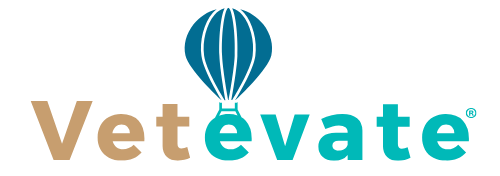When considering multiple veterinary job boards, the first and perhaps most important step is to examine their scope and specialization. Not all job boards are created equal, and while some cater specifically to the veterinary profession, others may only include veterinary roles as a small subset within broader healthcare or animal-related fields. Understanding the extent to which a platform is dedicated to veterinary medicine can provide immediate clarity on whether it will be useful for your goals as either an employer or job seeker.
Specialized veterinary job boards typically include more nuanced filters, targeted audiences, and relevant support tools. They may allow employers to list details specific to clinic settings, types of animal care, or certification requirements, which are often not available or as clearly defined on generalized job sites. Likewise, job seekers using a highly specialized veterinary job board are likely to find listings that are more aligned with their training and career goals. This focus narrows down the search, saving time and improving the likelihood of finding the right fit.
A good way to measure specialization is to look at the proportion of veterinary-specific jobs on each platform and the kind of content the site includes beyond job listings. Does it offer articles or blogs about the veterinary profession? Does it provide continuing education opportunities or industry news? Platforms that embed themselves deeply in the veterinary world tend to be more respected and more useful to employers and candidates alike. When stacking up job boards, scope and specialization should always be among the first criteria used for comparison.
Comparing User Experience and Platform Features
Once specialization is clear, the next area to examine is the overall user experience and the features each job board offers. A veterinary job board should not only be functional—it should make the process of posting or searching for jobs intuitive, efficient, and ideally even enjoyable. This includes layout, navigation, responsiveness on mobile devices, and the ability to filter, sort, and bookmark postings with ease. A cluttered or confusing interface can slow down the hiring process or frustrate job seekers enough to drive them away.
For employers, the posting process should be streamlined. A good veterinary job board will make it easy to create detailed, engaging listings and allow for additional media such as images, logos, or clinic videos. Employers should also evaluate whether they can manage multiple listings from a central dashboard, track candidate applications, and communicate with applicants directly through the platform. The best boards offer comprehensive tools that support the entire hiring journey, from listing to interview coordination.
For job seekers, features like saved searches, personalized job alerts, resume uploads, and profile customization can make a significant difference. A platform that remembers user preferences and updates them about new relevant opportunities creates a more dynamic and helpful experience. It’s also worth exploring how each board handles confidentiality and security, especially for employed candidates who want to keep their search discreet.
In addition to basic usability, the availability of analytics and performance tracking should be considered. Employers may want to know how many views a job post receives, how long listings remain active, and what percentage of applicants meet their minimum criteria. These insights can help refine listings and improve outcomes. Comparing these features side by side reveals which veterinary job boards are investing in technology to genuinely support the people who use them.
Assessing Reach, Visibility, and Candidate Quality
Another critical dimension to examine when stacking up veterinary job boards is their reach and visibility. The most elegant platform in the world is of limited value if the listings aren’t reaching qualified candidates. Employers should ask where and how the board promotes its job postings. Does the board have partnerships with veterinary schools, associations, or continuing education programs? Does it integrate with email newsletters or offer social media promotion for featured listings? The wider and more targeted the reach, the faster and more effectively a role is likely to be filled.
The size and engagement of a platform’s candidate database also play an important role. Some boards might boast thousands of job seekers, but if few are actively searching or qualified, then the quantity of users means little. It’s important to consider how often new listings are posted, how fresh the candidate pool appears, and whether the site provides demographic data on its user base. For veterinary employers in rural or underserved regions, platforms with broader national reach and relocation-oriented job seekers may offer a stronger return on investment.
For job seekers, the issue of reach is also important. A board that is widely used by respected employers will have a stronger selection of opportunities and a better chance of connecting users with meaningful roles. A veterinary professional will want to know that the site is trusted by reputable hospitals, clinics, and animal health companies, and that it isn’t flooded with outdated or generic listings. This speaks directly to the quality and timeliness of the jobs offered.
When comparing reach across platforms, testimonials and case studies can be helpful. They show how the platform has performed for others and may reveal hidden advantages such as speed of hire or support from customer service. Whether you’re an employer looking to fill a critical vacancy or a job seeker searching for your next career step, reach and visibility are key elements of comparison that go well beyond the surface.
Weighing Affordability, Support, and Overall Value
Finally, affordability and overall value should be carefully considered when comparing veterinary job boards. For employers, this means more than just looking at the base cost to post a job—it involves evaluating what’s included in that cost and how it compares to alternative recruitment methods such as staffing agencies or print advertising. The best boards offer transparent pricing with tiered options that allow small practices and large networks alike to choose the plan that best suits their needs and budget. Some offer single job posts at a flat rate, while others provide monthly packages or discounts for nonprofit organizations and schools.
What’s equally important is the level of support provided. Are there humans available to help you optimize your job listing? Will someone respond promptly if you run into technical issues? Strong customer support can make the difference between a frustrating experience and a smooth, successful hire. This is especially important in urgent situations, such as when a clinic needs immediate coverage or is trying to staff a new location on a tight timeline.
For job seekers, affordability is typically less of a concern since most veterinary job boards offer free access to listings and resume posting. However, the value lies in how much the platform supports their success. Boards that offer resume reviews, job alerts, and interview preparation resources add far more than just job access—they create a career support system that can help veterinary professionals thrive. The presence of educational resources and insights into salary trends or industry demands can also turn a good job board into a long-term partner in career development.
In the end, stacking up veterinary job boards means weighing all these elements together. A truly useful comparison takes into account not just features and pricing, but how well a platform meets the specific needs of those who use it. It’s about fit, function, and trust—and the best veterinary job boards prove their value by helping the right people find the right jobs, again and again.




